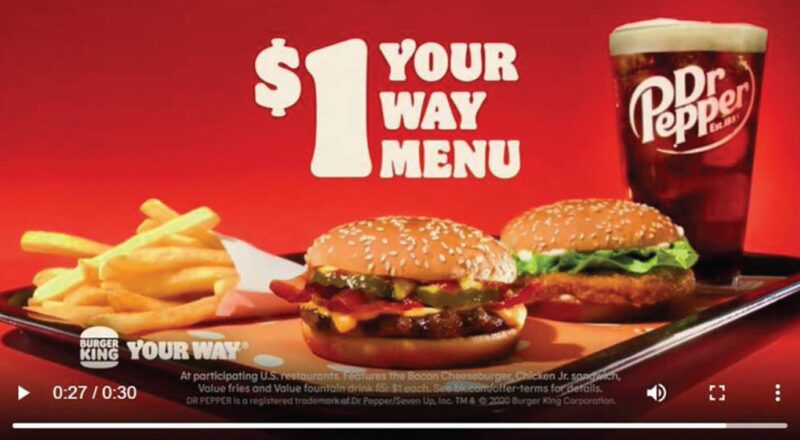How do ultra-processed foods get us to overeat?
“Companies are all about maximizing the allure of their products,” says Michael Moss, a Pulitzer Prize-winning former New York Times reporter whose new book is titled Hooked: Food, Free Will, and How the Food Giants Exploit Our Addictions.
“One definition of addiction is a repetitive behavior that some people find difficult to quit,” says Moss.
“That perfectly fits our relationship to food, though it varies from person to person.”
Addiction or not, it’s clear that companies keep pushing us to eat.
“They hate the word addiction, but they have these euphemisms like craveability and likeability,” says Moss. “My favorite is ‘more-ishness,’ which reflects their efforts to get us to eat more and more.”
We’re easy targets for enticing food because, as we evolved, extra pounds were a survival advantage.
“We’re designed to put on lots of body fat and defend against any efforts to shrink it,” notes Moss.
In hunter-gatherer societies, extra body fat could make the difference between life and death.
“None of this mattered until about 50 years ago, when the industry changed the nature of our food,” says Moss.
How do companies take advantage of our baked-in urge to keep eating?
“They want to sell as much as possible, so they have scientists who spend their time devising formulas that create the biggest attraction in the brain—the biggest wow,” says Moss.
It starts with the three ingredients featured in Moss’s previous book, Salt, Sugar, Fat.
■ Sugar. “The industry came up with the term ‘bliss point’ to describe the perfect amount of sugar in a drink or food that would send us over the moon. Not too little, not too much.”
■ Fat. “In snack foods like potato chips, 50 percent of the calories typically come from fat, which gives them that melt-in-your-mouth phenomenon, which so much ultra-processed food has. You hardly even have to chew it.”
■ Salt. “Salt is the flavor burst because it’s often on the surface of the food and the first thing that touches the tongue.”
But salt, sugar, and fat aren’t the whole ballgame. What else matters?
■ Fat plus carbs. “Foods with high concentrations of both fat and refined carbohydrates—like chocolate, ice cream, french fries, pizza, cookies, and chips—are the foods that people find most irresistible,” says Ashley Gearhardt, associate professor of psychology at the University of Michigan.
What’s more, adds Gearhardt, “flavor enhancers and texturizers might amplify the appeal of highly processed foods.”
■ Variety. “We came to cherish variety in food millions of years ago when hominids started walking upright,” says Moss. Variety boosted the odds of getting all the nutrients we needed.
But variety still compels us. In 1982 Barbara Rolls, director of the Laboratory for the Study of Human Ingestive Behavior at Penn State, found that people eat about 15 percent more pasta if given a variety of shapes instead of just one.
“And when we served sandwiches with four different fillings, people ate a third more than when they were served sandwiches with one filling,” she notes.
“The appeal of variety explains the smorgasbord effect,” says Moss, “where you can feel completely full, but dessert comes along and all of a sudden your brain goes, ‘Ah, we can eat more.’”
When it comes to ultra-processed foods, variety can mean 10 flavors of potato chips or crackers or cereal.

How can minimizing variety help people eat less?
On the flip side, minimizing variety—for example, by cutting carbs—may help some people eat less. “It’s just really hard to maintain that strict monotony,” says Moss.
■ Speed. In a 2019 study people ate ultra-processed foods faster than the unprocessed foods. “Eating rate can make a difference,” says Rolls. “Unprocessed foods often take more chewing. They have more intact fiber. They might be crunchier. They’re not blended down as much.”
■ Advertising. “Companies know how to press those emotional buttons to get us to eat, even when we’re not hungry,” says Moss. “The key is to create strong food memories by showing the product at the precise moment when our emotions are running high.”
Studies show that TV ads influence food preferences and consumption, at least in children, according to the World Health Organization.
■ Snacking. “The food industry has created more and more products that encourage us to snack during the day. It’s basically a fourth meal,” says Moss.
“Companies became very adept at ultra-convenience—that is, food you can eat while you’re doing something else. When that happens, your brain is not paying attention to the signals from your stomach that are going, ‘Wait a minute. I’m filling up down here.’”
In one study, people ate about 35 percent more pizza and 70 percent more macaroni and cheese while watching TV than while listening to music.
■ Cost. “The food industry is all about making products as cheaply as possible,” says Moss. “They use flavors that mimic the tastes and smells of the real thing. Their overall purpose is to keep their food as cheap as possible.”
Moss has asked companies how they’re helping people eat more fruits and vegetables. “You get this blank stare, because they can’t do it,” he says. “If they stuff a Hot Pocket with broccoli rabe, they lose the cheapness factor.”
Continue reading this article with a NutritionAction subscription
Already a subscriber? Log in

